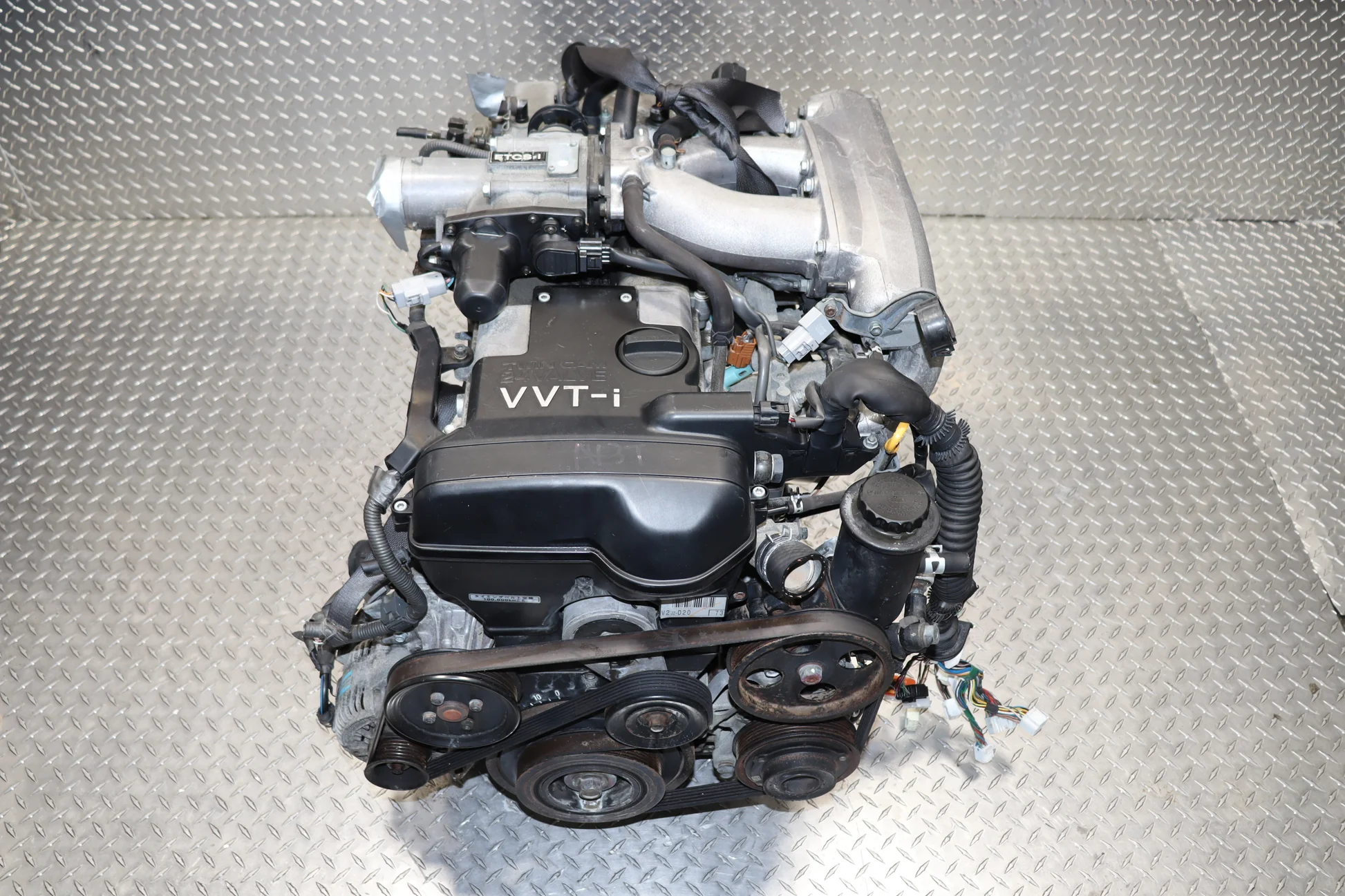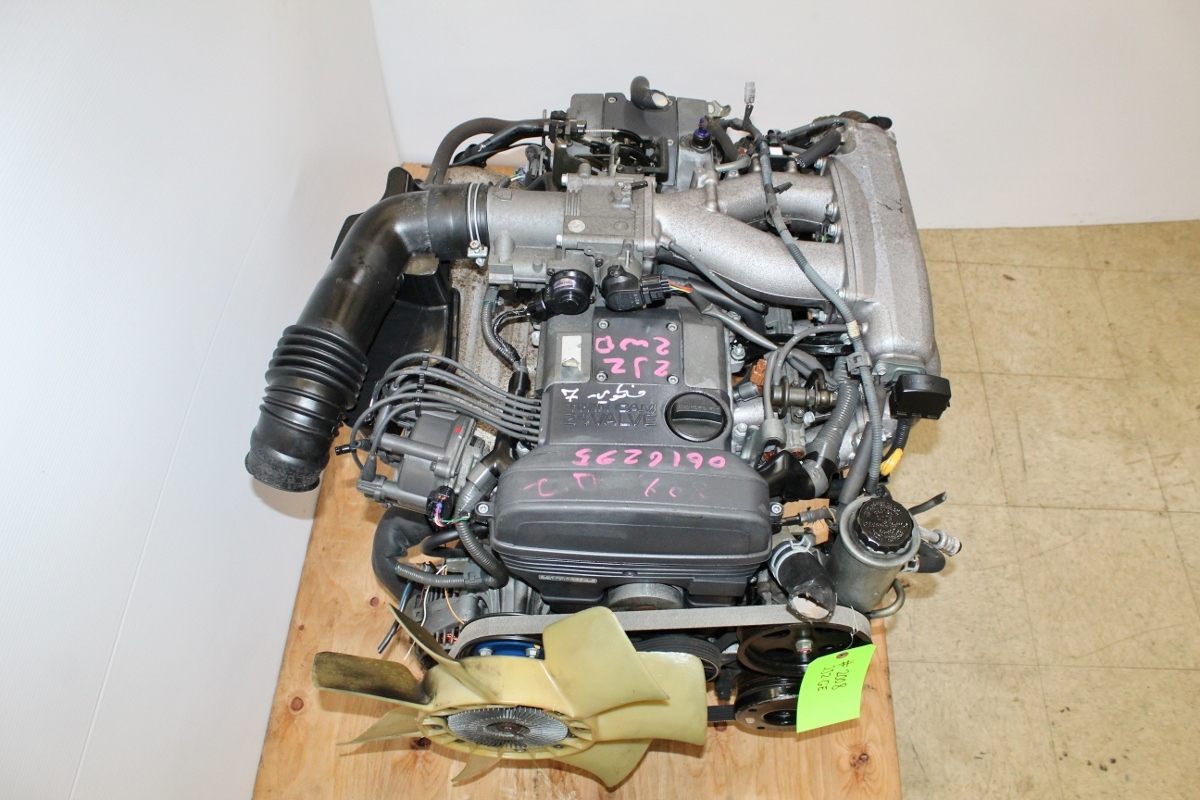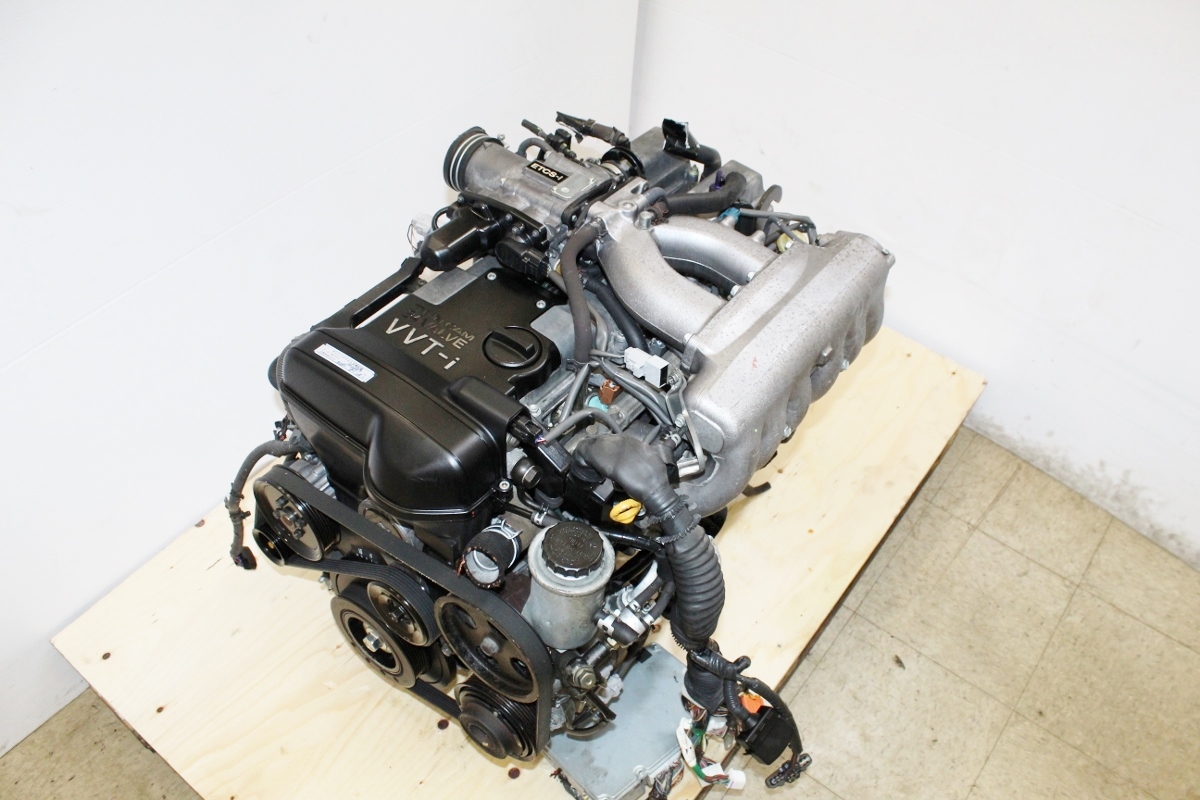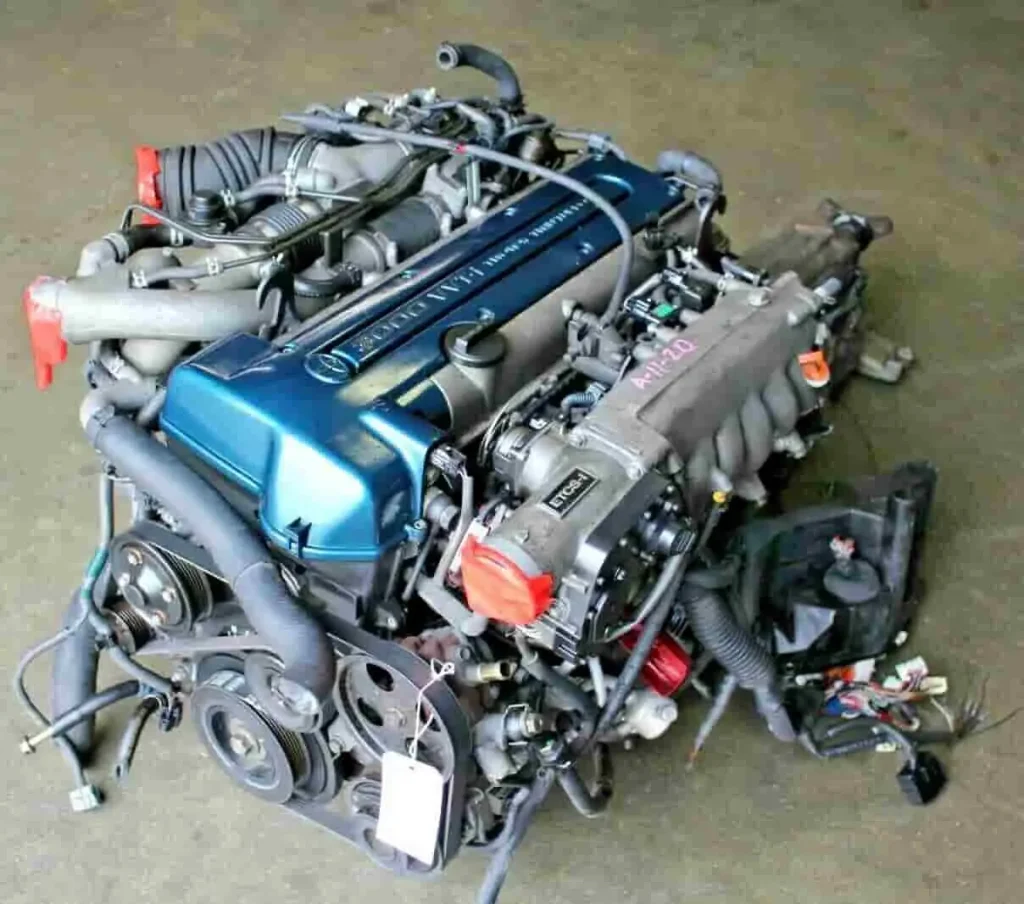The Complete Guide to the 2JZ GE/GTE/FSE Engine
The Toyota 2JZ engine family is one of the most iconic inline-six engines in automotive history. Renowned for its strength, smooth operation, and massive tuning potential, the 2JZ is a legend among enthusiasts, particularly in the JDM community. The three main variants—2JZ-GE, 2JZ-GTE, and 2JZ-FSE—each have unique characteristics that make them suitable for different applications, from daily driving to motorsports.

2JZ GE/GTE/FSE Engine for sale
Overview of the 2JZ Engine Family
The 2JZ belongs to Toyota’s JZ engine family, which succeeded the M-series engines in the early 1990s. Produced between 1991 and 2007, the 2JZ was engineered as a 3.0-liter inline-six DOHC motor and became famous for its reliability, tunability, and smooth power delivery.
-
Displacement: 2,997 cc (3.0L)
-
Configuration: Inline-6, dual overhead cam (DOHC), 24 valves
-
Bore x Stroke: 86 mm × 86 mm (square engine design)
-
Block Material: Cast iron (extremely durable)
-
Head Material: Aluminum

2JZ GE/GTE/FSE Engine for sale
Variants and Specifications
🔹 2JZ-GE (Naturally Aspirated)
-
Production: 1991–2005
-
Aspiration: Naturally aspirated
-
Fuel System: Sequential fuel injection
-
Compression Ratio: 10.0:1
-
Power Output: 215–230 hp (varies by market and model year)
-
Torque: 209–220 lb-ft
-
Features: Non-turbo version, designed for reliability and daily use
-
Common Use: Lexus and Toyota sedans, base models of Supra
🔹 2JZ-GTE (Turbocharged)
-
Production: 1991–2002
-
Aspiration: Twin-turbocharged (sequential system)
-
Compression Ratio: 8.5:1 (early models), 9.0:1 (later)
-
Fuel System: Sequential electronic fuel injection
-
Power Output: 276 hp (Japan, factory-limited), 320 hp (U.S. Supra)
-
Torque: 320–333 lb-ft
-
Features: Forged crankshaft, oil-cooled pistons, upgraded internals
-
Tuning Potential: 700–1,000+ hp with stock block and aftermarket turbos
-
Common Use: Toyota Supra MK4 (A80), Toyota Aristo (JDM)

2JZ GE/GTE/FSE Engine for sale
🔹 2JZ-FSE (Direct Injection)
-
Production: 2000–2007
-
Aspiration: Naturally aspirated with Toyota’s D-4 direct injection system
-
Compression Ratio: 11.3:1
-
Power Output: ~217 hp
-
Torque: 217 lb-ft
-
Features: More fuel-efficient, designed for luxury sedans
-
Common Use: Toyota Crown, Toyota Mark II, Lexus IS300 (Japan/Europe variants)
Vehicle Applications
Here are the most notable vehicles powered by each 2JZ variant:
🚗 2JZ-GE Applications:
-
Toyota Supra MK4 (JZA80, non-turbo)
-
Lexus IS300 (1998–2005, U.S. market)
-
Lexus GS300 (1991–2005)
-
Toyota Soarer / Lexus SC300
-
Toyota Crown, Mark II, Chaser, Cresta
🚗 2JZ-GTE Applications:
-
Toyota Supra MK4 (JZA80, 1993–2002)
-
Toyota Aristo (JDM GS300/400 equivalent)
-
Some special edition Toyota Chaser & Soarer models (limited markets)
🚗 2JZ-FSE Applications:
-
Toyota Crown (2001–2007)
-
Toyota Mark II Blit
-
Toyota Brevis
-
Lexus IS300 (select markets with direct injection)

2JZ GE/GTE/FSE Engine for sale
Why is the 2JZ So Popular?
-
Strength and Reliability: The cast-iron block can handle immense boost levels.
-
Tuning Potential: With aftermarket support, builds exceeding 1,000 hp are common.
-
Aftermarket Support: One of the most supported engines worldwide.
-
Smooth Inline-6 Operation: Balanced and refined, excellent for performance and comfort.
-
JDM Legend Status: Thanks to the Toyota Supra MK4 and appearances in motorsport and pop culture (e.g., Fast and Furious franchise).
Frequently Asked Questions (FAQs)
❓ What is the difference between the 2JZ-GE and 2JZ-GTE?
-
The GE is naturally aspirated, while the GTE is turbocharged.
-
The GTE has stronger internals (forged crank, oil squirters) and lower compression to handle boost.
❓ How much horsepower can a stock 2JZ handle?
-
The 2JZ-GTE block is known to reliably handle 700–800 hp on stock internals with proper tuning.
❓ Is the 2JZ still in production?
-
No, production ended in the mid-2000s. Toyota has since moved on to other engines like the GR series (2GR, 3GR, etc.).
❓ What cars come with the 2JZ in the U.S.?
-
U.S. market cars with 2JZ include the Toyota Supra MK4 (NA & Turbo), Lexus GS300, and Lexus IS300.
❓ How does the 2JZ compare to the Nissan RB26?
-
Both are iconic inline-six engines. The RB26DETT is lighter and revs higher, while the 2JZ-GTE has a stronger block and generally handles more power with stock internals.
Can I swap a 2JZ into my car?
-
Yes, the 2JZ is a popular swap candidate. With proper mounts, wiring, and transmission adaptation, it has been swapped into everything from Nissans, BMWs, and Hondas to classic American muscle cars.
Conclusion
The 2JZ engine family (GE, GTE, FSE) represents the pinnacle of Toyota’s engineering in the 1990s and early 2000s. Whether you’re interested in daily driving reliability (GE/FSE) or high-performance turbo builds (GTE), the 2JZ remains one of the most versatile and respected engines worldwide. Its combination of durability, tuning potential, and legendary status ensures that the 2JZ will always be celebrated among enthusiasts and collectors alike.




